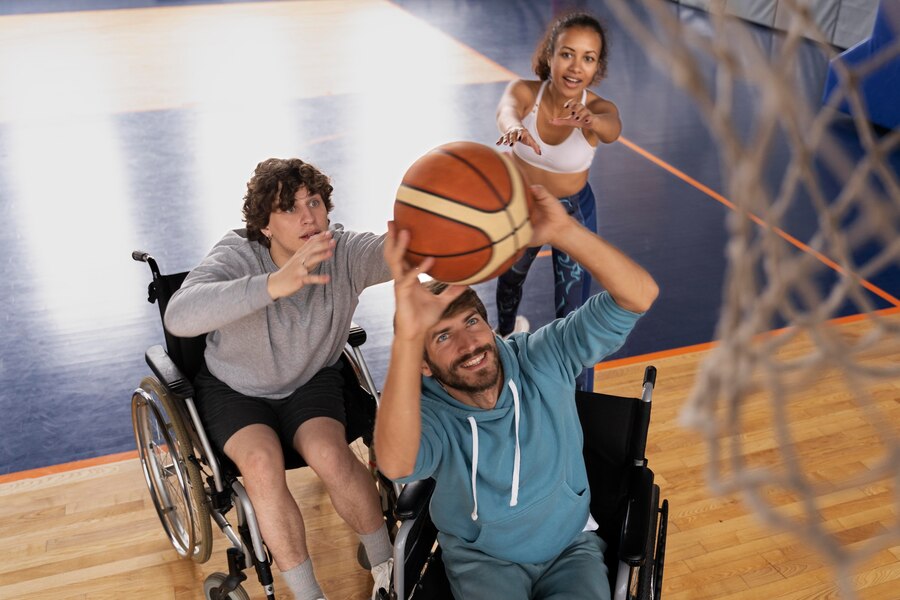The Integral Role of Adaptive Sports in Inclusive Physical Activity

Inclusive physical activity is a topic of significant importance in today’s health and fitness landscape. This equal access to physical activities that enhance health, wellness, and social interaction for people with varying abilities. One of the most impactful strategies for promoting inclusive physical activity is through the use of adaptive sports. In this blog post, we will discuss how adaptive sports provide a pathway for more people to become physically active and the various ways in which you can get involved.
The concept of adaptive sports
Adaptive sports are sports for people with disabilities, either for competition or recreational purposes. The modifications could be in the form of altered equipment, rules, or gameplay to accommodate different ability levels. These sports include wheelchair basketball, sitting volleyball, and paralympic swimming, among others. They provide a platform for individuals with disabilities to showcase their abilities, thus dismantling stereotypes and fostering a more inclusive society.
In understanding the relevance of adaptive sports, it is essential to delve into its effects on fostering an environment of inclusive physical activity:
- Breaking down barriers. Adaptive sports create an environment where individuals with disabilities can participate alongside their able-bodied peers. This inclusion helps to break down societal and psychological barriers that often prevent people with disabilities from engaging in physical activities.
- Promoting physical health. Like any sports, adaptive sports offer immense physical health benefits. Regular participation can lead to improved cardiovascular health, strength, flexibility, and overall fitness.
- Enhancing mental well-being. Sports participation is known to boost self-esteem and reduce stress and anxiety. This mental health benefit is particularly significant for individuals with disabilities, who often face unique psychological challenges.
- Encouraging social interaction. Adaptive sports provide opportunities for social interaction and community involvement. They enable participants to form friendships and build networks, which can lead to increased social participation.
- Fostering a culture of inclusion. Perhaps the most profound impact of adaptive sports is the promotion of a culture of inclusion. It shows that individuals with disabilities are not defined by their conditions and that they can excel in sports and other areas of life.
Thus, the influence of adaptive sports on inclusive physical activity is significant and far-reaching. By breaking down barriers, enhancing health, and encouraging socialization, these sports play an indispensable role in creating a more inclusive society. The most notable impact is arguably the cultivation of an inclusive culture where individuals are acknowledged and celebrated for their abilities, not sidelined due to their disabilities.
How to incorporate adaptive sports into community programs?
To maximize the benefits of adaptive sports and ensure their influence on inclusive physical activity, it is crucial that these sports are integrated effectively into community programs. Here are some valuable pointers that can guide the process of incorporating adaptive sports into your local community’s physical activity initiatives:
- Access to resources. Ensure that there are sufficient resources to implement adaptive sports programs, including equipment, facilities, and trained staff.
- Education and awareness. Promote adaptive sports through education and awareness campaigns. The public should know what adaptive sports are, the benefits they offer, and how they can participate or support.
- Collaboration. Collaborate with local schools, healthcare facilities, and disability organizations. These partnerships can lead to more inclusive and comprehensive programs.
- Evaluation. Regularly evaluate the programs to identify areas of improvement. Participant feedback can be valuable in shaping future programs.
Adopting these tips can help to create a solid foundation for implementing successful and impactful adaptive sports programs. Remember, the end goal is to facilitate an environment that encourages participation from all, no matter their physical abilities.
Regular evaluations and feedback are critical to improving and making the program more effective over time. As we forge ahead, these community programs can act as the stepping stones toward a more inclusive future in sports and physical activity.
Conclusion
The transformative power of adaptive sports extends far beyond the playing field. By providing an avenue for inclusive physical activity, they contribute significantly to the physical, mental, and social well-being of individuals with disabilities. In doing so, they help to create a society where everyone has an equal opportunity to participate in and enjoy sports. Adaptive sports truly encapsulate the ethos of sports: unity, resilience, and the celebration of human potential. As we strive for a more inclusive world, the promotion and support of adaptive sports must remain a top priority.
We hope that this blog post was informative and inspiring, and that it will encourage you to include adaptive sports in your community’s physical activity initiatives. Do you want to leave any feedback? If so, please contact us. We would love to hear your thoughts and insights!